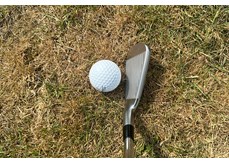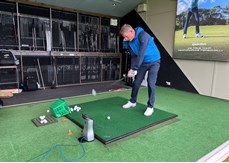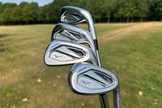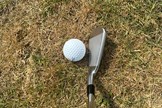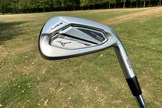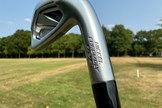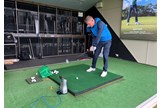Launching a new enterprise: Mizuno JPX 925 Hot Metal Pro Review
Last updated:
-
At a glance
- TG Rating
- Owner Rating
-
Pros
- The cleanest look of the Hot Metal range
- Great for better golfers wanting more distance
- A very forgiving model
-
Cons
- I'm not a fan of the badging or some of the feedback
What we say...
The Mizuno JPX 925 Hot Metal offers serious ball speed and more height than ever. But what can Mizuno offer for the golfer who wants the help without the size to match?
Every model of the Mizuno JPX 925 Hot Metal Iron series stands out from one another. True, they do share their technologies within the family, as should be expected from sister sets. But the difference for Mizuno is that each member of the family should appeal to a particular type of golfer. This distinction is one that sets Mizuno apart in the category and is another reason that the previous generation of Hot Metal achieved a position in our choice of best game-improver irons.
So how does the Hot Metal Pro define itself? The story of the standard Hot Metal has been about adding control to the power offered from the 923 model. The Hot Metal HL is about squeezing every last foot of height out of your golf game. The Hot Metal Pro, then, can probably best be described as an aspiration story, and it’s one that still stands out from most other models and brands in this category.
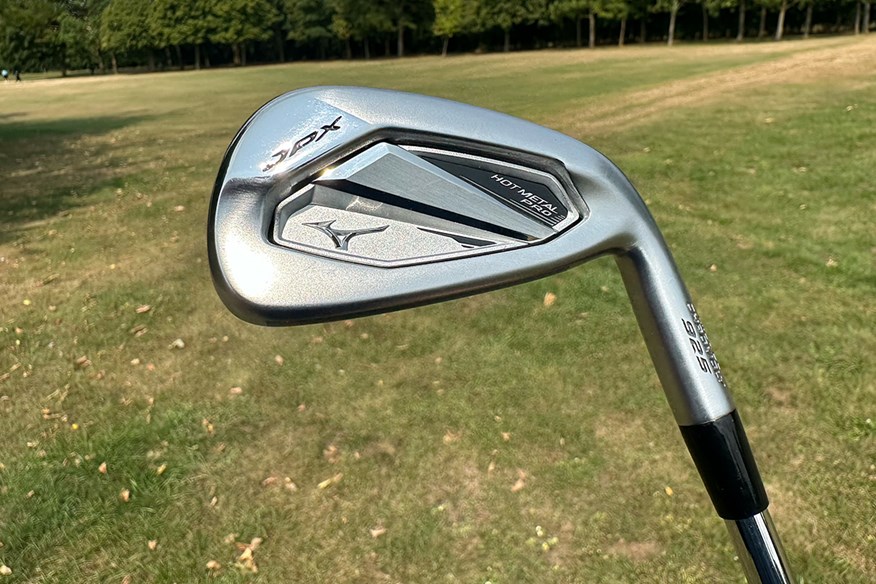
Style with substance
We’re on our 4th generation of Hot Metal Pro now, so it should be no surprise that Mizuno’s M.O. is to make an iron that packs the power from the mainline technology, in a slimmer profile. That means thinner toplines to appeal to the ‘better’ player, reworked shapes to tighten the look from address and for how the club interacts with the ground, and less offset to encourage a more open look.
Included in this version of the HMP is a new badge to more clearly differentiate it from its fellow Hot Metal irons, with a dark panel in the rear of the head highlighting the name for any in doubt.
I like the look of this one the most. The profile has been compressed versus the other heads, and while it certainly will get the attention of the golfer who straddles the ball-striking line between Players-Distance and Game-Improver irons, it also can inspire confidence for any golfer who wants consistency across the face without the offset that may see too much of a miss left.
The only thing I don’t like is the small black on the back of the head. For me, it seems out of place to have what looks like a piece of plastic wedged into an iron that is meant to appeal to a player who generally wants a simple and clean look. That being said, you may feel differently and once it was down behind the ball I immediately forgot about any issues with the badge.
Max Speed, Slimmer Profile
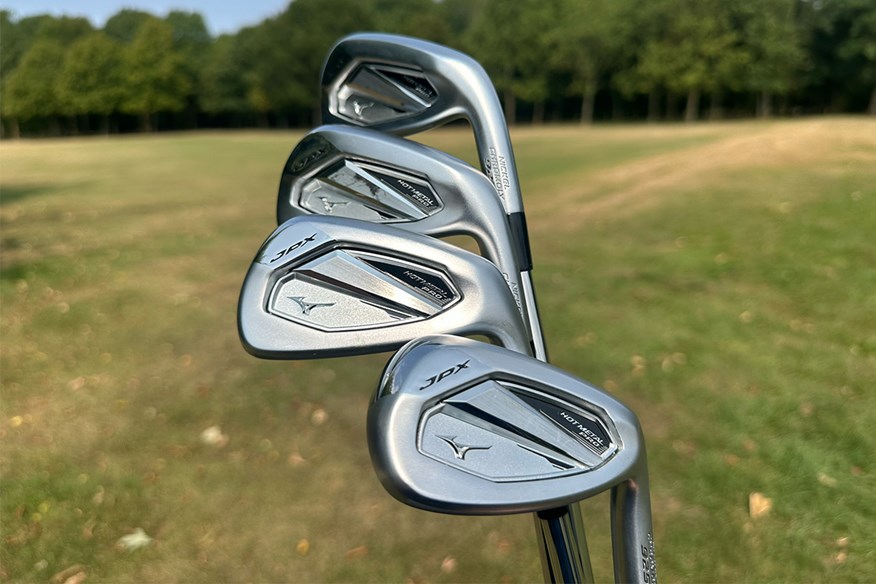


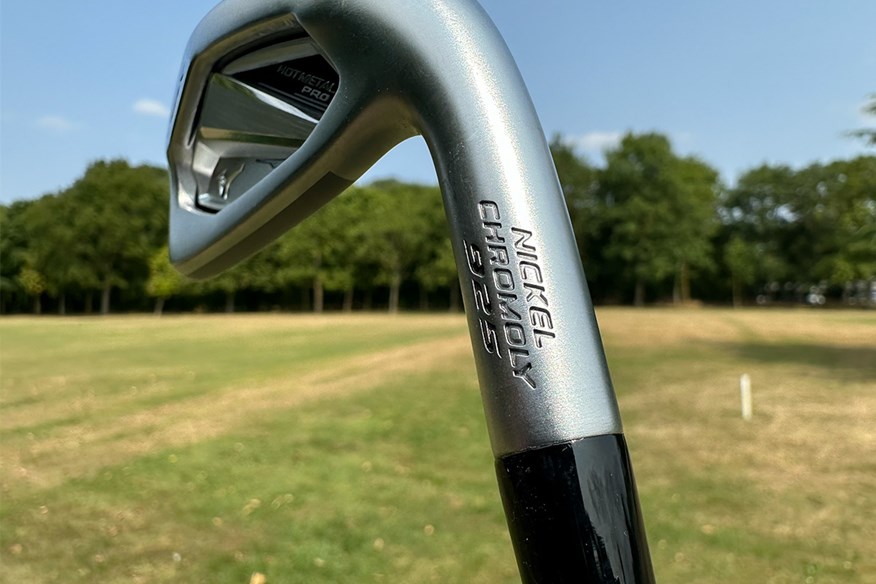

Pros
- The cleanest look of the Hot Metal range
- Great for better golfers wanting more distance
- A very forgiving model
Cons
- I'm not a fan of the badging or some of the feedback
| Lofts | 4-PW / GW |
| Stock Shaft | Nippon NS Pro 950 Neo / UST Mamiya Recoil DART ESX |
| Stock Grip | Lamkin UT+ |
| Left Handed? | Yes |
- CORTECH Contour Ellipse Face
- Multi-Material Construction with Tungsten Weighting
- Chromoly 4140M
- Seamless Cup Face
- Harmonic Impact Technology
- White Satin Brush Finish
To go along with the more player-centric looks, Mizuno have retained the Nickel Chromoly face material from the 923 HMP, but they’ve implemented a new Contour Ellipse face. The pattern moves from low-heel to high-toe, the typical area for misses on irons, with a multi-thickness design that’s 30% thinner than before at 1.2mm (stack 12 pieces of paper on each other and you’re about there). Effectively you’ll be seeing more ball speed on your mishits, helping bring dispersion circles closer together. This has been combined with a (new for JPX series) Multi-Material Construction which utilizes tungsten weighting in the long- and mid-irons to bring mass and center of gravity down lower in the head.
There’s no doubt this aspect of Mizuno’s latest release hits the mark with it’s performance goals. The power from the Chromoly 4140M face is evident from your first contact. What’s interesting is that the Pro does seem to have increased in off-center forgiveness. On testing, I hit saw ball speed standard deviation (how much my speed would expect to vary by) decrease by 0.9 mph. That doesn’t sound huge, but considering that the 923 saw a deviation of 3.6mph, getting nearly a whole mph tighter is impressive to see.
The reweighted longer irons certainly helped with height, too. This technology has proven itself to be legitimate in every model of the JPX 925 that I’ve tested, which I love in a game-improver iron. As lofts have gotten stronger to provide the extra distance, seeing a retention, and even an increase, of height is a massive plus for any model in the category.
Mizuno have also varied the sole thickness of each iron, along with the new Seamless Cup Face, to improve the stability of low-face impacts.
With the total combination of performance, I’m struggling to find an element of the Hot Metal Pro that I dislike. From the shaping to the distance to the flight, it’s ticking a lot of boxes for me.
There’s one thing with the HMP, though, that has irked me when considering this iron.

Sound Affects
Harmonic Impact Technology is the overarching name that Mizuno are using to refer to their retuning of the clubhead to improve sound design.
HIT uses a mixture of designs to achieve a balance of sound that attempts to move this series closer to the feedback of their softer distance heads, such as the Pro 245 or the JPX forged models. Ribs have been strategically placed across the head to dial in acoustics, along with a Sound Bar (visible on the back of the iron) and a framework that balances weight in position to dampen vibrations throughout the head.
Unfortunately, I’ve not heard the difference. Despite the fine-tuned geometry of the head, I’ve not been able to get past the sensation of power from striking this set. It’s not that it’s a bad sound but it certainly doesn’t remind me of the even more player-orientated lines available from the company.
That being said, this is a small trifle for me to take with Mizuno and JPX Hot Metal Pro. As with the badge on the back, this is entirely a personal take and, if Mizuno hadn’t made a big play of the change to acoustics, I wouldn’t have even felt the need to comment.

Final words
I feel like I’ve complained more about this iron than my actual opinion warrants. If you told me to go out and play a round with anything available in the GI category, I’d take the Hot Metal Pro with little consideration for anything else. It’s still the most ‘Mizuno’ of any forgiving iron on the market, and I don’t see any golfer who’s considering this iron being disappointed when they finally address the ball with it.
Small concerns aside, this is an incredible iron and one that could be a mainstay in your golf bag for years to come.
About the author

Lewis Daff
Lewis Daff joined the Today’s Golfer digital team in 2024, having spent more than a decade in both big box golf retail and independent stores, working as a club fitter and builder.
Experienced with every level of golfer, from beginner to professional, he has achieved Master Fitter and Builder status with most major manufacturers, including Mizuno, Taylormade, and Callaway, helping him to cement both a wide and deep knowledge base. Lewis specializes in Clubs, Shafts, Training Aids, Launch Monitors and Grips.
In Lewis’ bag is Titleist GT3 Driver (9º) with Fujikura Ventus Black, Titleist GT2 Fairway Wood (15º), Wilson Staff D9 Forged 3-iron, Srixon ZX7 MKii Irons (4-PW), Titleist SM9 Wedges (52º, 60º), Toulon San Diego Putter, and Callaway Chrome Tour Ball.
Talk to Lewis about why steel shafts are now dead and graphite is the only way forward or any other equipment you’d like to debate via his email.
Product Information
Details: Mizuno JPX 925 Hot Metal Pro Irons
RRP: £990 (6-piece set) Steel shafts, £165 per iron
Availability: 4 – PW, GW (RH / LH)
Stock shafts: Nippon NS Pro 950 Neo (s) UST Mamiya Recoil Dart ESX (g)
Stock grips: Lamkin UT+
7-iron loft: 28°
Category: Game Improver Iron
Construction: Multi-Material Construction / Nickel Chromoly

